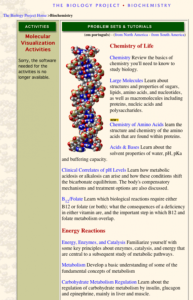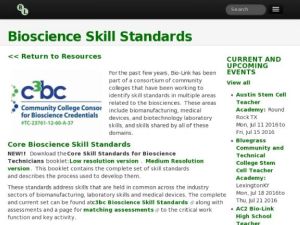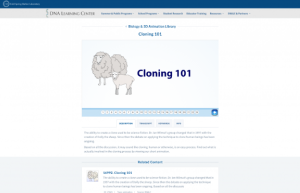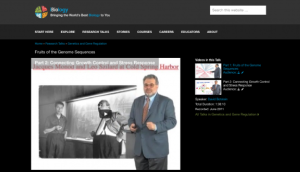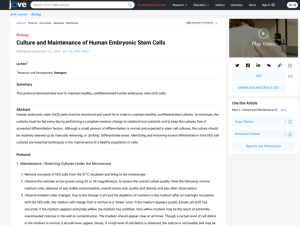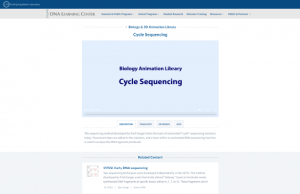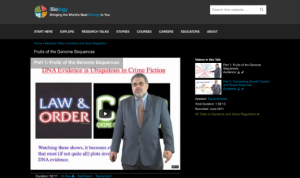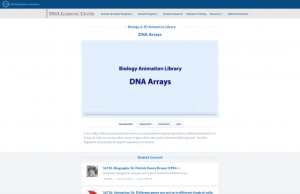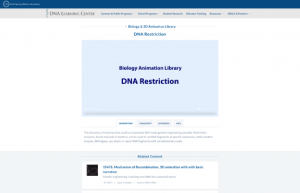Browse Resources
(19 classifications) (69 resources)
| Activity
(415)
Case Study (54) Course (247) Curriculum (114) Demonstration (101) Experiment/Lab Activity (428) Game (10) Instructor Guide/Manual (425) Interactive Simulation (129) |
Lecture/Presentation
(1,646)
Lesson/Lesson Plan (407) Model (2) Problem Set (52) Project (3) Student Guide (241) Syllabus (105) Textbook (84) Tutorial (131) Unit of Instruction (132) |
Resources | |
|---|---|
This collection of learning materials from the Biology Project at the University of Arizona is divided up into two sections: Chemistry of Life and Energy Reactions. On the site, visitors can find eleven tutorials and problems sets on topics such as Large Molecules, Acids and Bases, Metabolism, and...
Here users will find an assortment of Bioscience/Agricultural Biotechnology Skills Standards. These should be useful for development of new programs as well as for comparisons with existing programs. The sections discussed are: Biopharmaceutical Manufacturing Skill Standards, Combined...
This animation from Cold Spring Harbor Laboratory's Dolan DNA Learning Center presents the cloning process. Visitors can view the scientific history of cloning using embryonic and G0 state cells and the various procedures used by scientists to clone animals. Watch as the process for creating Dolly...
This lecture from the iBioSeminars project is presented by David Botstein from Princeton University. It presents experiments done in Botstein's lab studying, in yeast, the coordination of growth rate, stress response, metabolism and cell division. Using innovative methods to color code and cluster...
Lia Kent, of Stemgent's Research and Development team, has created this video to demonstrate feeding, removing differentiation from, and passaging human embryonic stem cells. The video is also accompanied by protocols for thawing and freezing hES cells, discussion, materials, references, a forum for...
This animation from Cold Spring Harbor Laboratory's Dolan DNA Learning Center presents the cycle sequencing. The animation contains instructions on how to sequence a piece of DNA beginning with the raw materials needed, and details on the process: "Fluorescent dyes are added to the reactions, and a...
This lecture from the iBioSeminars project is presented by David Botstein from Princeton University. It presents an overview of the benefits for science and society derived from sequencing the genomes of multiple organisms, including humans. The sequences show that many genes have been conserved...
This lecture from the iBioSeminars project is presented by Mary C. Berckerle from the Huntsman Cancer Institute at the University of Utah and covers the identification of the focal adhesion protein, zyxin, by a lab. Recent work revealed that zyxin is down-regulated upon expression of the Ewing...
This animation from Cold Spring Harbor Laboratory's Dolan DNA Learning Center presents DNA arrays. The animation contains information on Pat Brown's discovery and the purpose of DNA arrays to study gene expression as well as its role in the development of pharmacogenomic treatment for diseases such...
The discovery of enzymes that could cut and paste DNA made genetic engineering possible. Restriction enzymes, found naturally in bacteria, can be used to cut DNA fragment at specific sequences, while another enzyme, DNA ligase, can attach or rejoin DNA fragments with complementary ends. This...
| |
| ← Previous | Next → |
